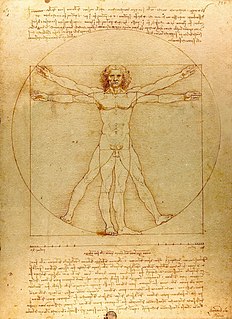
Drawing is a form of visual art in which an artist uses instruments to mark paper or other two-dimensional surface. Drawing instruments include graphite pencils, pen and ink, various kinds of paints, inked brushes, colored pencils, crayons, charcoal, chalk, pastels, erasers, markers, styluses, and metals. Digital drawing is the act of drawing on graphics software in a computer. Common methods of digital drawing include a stylus or finger on a touchscreen device, stylus- or finger-to-touchpad, or in some cases, a mouse. There are many digital art programs and devices.

Photography is the art, application, and practice of creating durable images by recording light, either electronically by means of an image sensor, or chemically by means of a light-sensitive material such as photographic film. It is employed in many fields of science, manufacturing, and business, as well as its more direct uses for art, film and video production, recreational purposes, hobby, and mass communication.
In photography and cinematography, a normal lens is a lens that reproduces a field of view that appears "natural" to a human observer. In contrast, depth compression and expansion with shorter or longer focal lengths introduces noticeable, and sometimes disturbing, distortion.
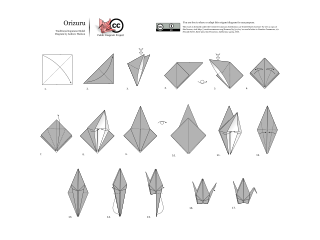
The Yoshizawa–Randlett system is a diagramming system used to describe the folds of origami models. Many origami books begin with a description of basic origami techniques which are used to construct the models. There are also a number of standard bases which are commonly used as a first step in construction. Models are typically classified as requiring low, intermediate or high skill depending on the complexity of the techniques involved in the construction.

Group f/64 or f.64 was a group founded by seven 20th-century San Francisco Bay Area photographers who shared a common photographic style characterized by sharply focused and carefully framed images seen through a particularly Western (U.S.) viewpoint. In part, they formed in opposition to the pictorialist photographic style that had dominated much of the early 20th century, but moreover, they wanted to promote a new modernist aesthetic that was based on precisely exposed images of natural forms and found objects.

Andreas Bernhard Lyonel Feininger was an American photographer and a writer on photographic technique. He was noted for his dynamic black-and-white scenes of Manhattan and for studies of the structures of natural objects.
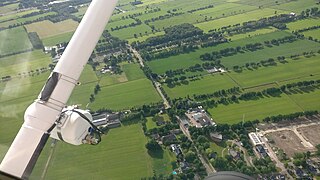
Aerial survey is a method of collecting geomatics or other imagery by using airplanes, helicopters, UAVs, balloons or other aerial methods. Typical types of data collected include aerial photography, Lidar, remote sensing and also geophysical data (such as aeromagnetic surveys and gravity. It can also refer to the chart or map made by analysing a region from the air. Aerial survey should be distinguished from satellite imagery technologies because of its better resolution, quality and atmospheric conditions. Today, aerial survey is sometimes recognized as a synonym for aerophotogrammetry, part of photogrammetry where the camera is placed in the air. Measurements on aerial images are provided by photogrammetric technologies and methods.

The rule of thirds is a "rule of thumb" for composing visual images such as designs, films, paintings, and photographs. The guideline proposes that an image should be imagined as divided into nine equal parts by two equally spaced horizontal lines and two equally spaced vertical lines, and that important compositional elements should be placed along these lines or their intersections. Proponents of the technique claim that aligning a subject with these points creates more tension, energy and interest in the composition than simply centering the subject.
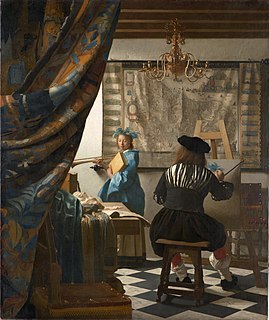
The term composition means "putting together". It can be thought of as the organization of the elements of art according to the principles of art. Composition can apply to any work of art, from music through writing and into photography, that is arranged using conscious thought.

Line engraving is a term for engraved images printed on paper to be used as prints or illustrations. The term is mainly used in connection with 18th- or 19th-century commercial illustrations for magazines and books or reproductions of paintings. It is not a technical term in printmaking, and can cover a variety of techniques, giving similar results.

In classical guitar, the right hand is developed in such a way that it can sustain two, three, and four voice harmonies while also paying special attention to tone production. The index (i), middle (m), and ring (a) fingers are generally used to play the melody, while the thumb (p) accompanies in the bass register adding harmony, and produces a comparable texture and effect to that of the piano. The classical guitar is a solo polyphonic instrument, and it is difficult to master.

Jay Hambidge (1867–1924) was a Canadian-born American artist who formulated the theory of "dynamic symmetry", a system defining compositional rules, which was adopted by several notable American and Canadian artists in the early 20th century.
The cabinet card was a style of photograph which was widely used for photographic portraiture after 1870. It consisted of a thin photograph mounted on a card typically measuring 108 by 165 mm.

Miss La La at the Cirque Fernando is an oil on canvas painting by the French Impressionist artist Edgar Degas. Painted in 1879 and exhibited at the Fourth Impressionist Exhibition in Paris that same year, it is now in the collection of the National Gallery in London. It is Degas's only circus painting, and Miss La La is the only identifiable person of color in Degas's works. The special identity of Miss La La and the great skills Degas used in painting her performance in the circus made this piece of art important, widely appreciated but, at the same time, controversial.

In photography and cinematography, headroom or head room is a concept of aesthetic composition that addresses the relative vertical position of the subject within the frame of the image. Headroom refers specifically to the distance between the top of the subject's head and the top of the frame, but the term is sometimes used instead of lead room, nose room or 'looking room' to include the sense of space on both sides of the image. The amount of headroom that is considered aesthetically pleasing is a dynamic quantity; it changes relative to how much of the frame is filled by the subject. Rather than pointing and shooting, one must compose the image to be pleasing. Too much room between a subject's head and the top of frame results in dead space.

A Bigger Splash is a large pop art painting by British artist David Hockney. Measuring 242.5 centimetres (95.5 in) by 243.9 centimetres (96.0 in), it depicts a swimming pool beside a modern house, disturbed by a large splash of water created by an unseen figure who has apparently just jumped in from a diving board. It was painted in California between April and June 1967, when Hockney was teaching at the University of California, Berkeley. Jack Hazan's fictionalised 1973 biopic, A Bigger Splash, concentrating on the breakup of Hockney's relationship with Peter Schlesinger, was named after the painting.
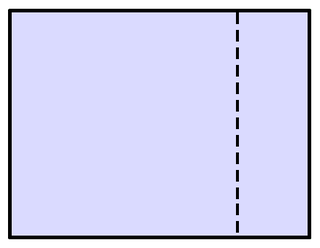
Rabatment of the rectangle is a compositional technique used as an aid for the placement of objects or the division of space within a rectangular frame, or as an aid for the study of art.

Harold Davis is an American photographer and author.

The Golden Triangle (Composition) rule is a rule of thumb in visual composition for photographs or paintings, especially those which have elements that follow diagonal lines. The frame is divided into four triangles of two different sizes, done by drawing one diagonal from one corner to another, and then two lines from the other corners, touching the first at 90 degree angles. There are a couple ways this can be used:
Cyanography is an artistic practice derived from photography and visual arts, which allows the creation of monochrome images in blue.


















